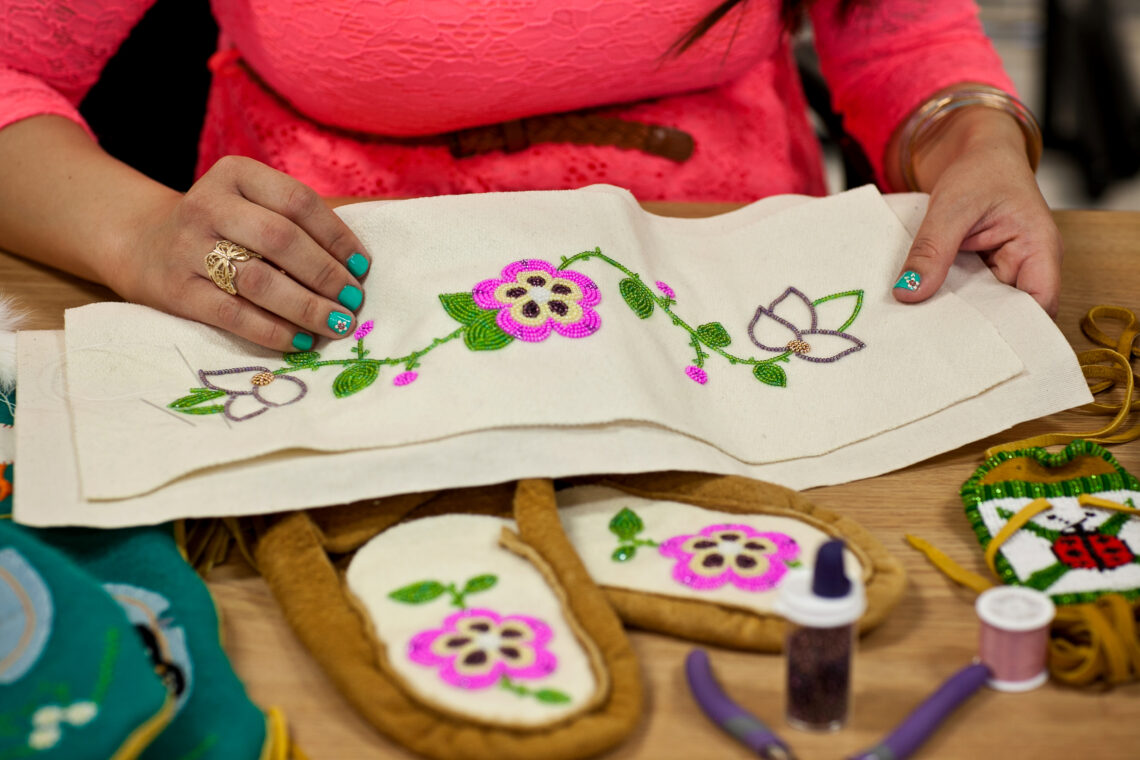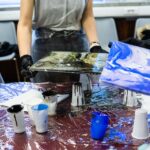
Celebrating heritage through art
In August 2021, Sabrina Fontaine, a 25-year-old artist from London, Ont., opened her online store Miskomin Manidoomin. Fontaine, who is currently residing on the COM: Chippewa of the Thames, Oneida Nation of the Thames and Munsee-Delaware Nation, says that her store name roughly translates to Raspberry Spirit Beads.
While art has always been a part of her life, she has not been very public with it until recently. “I’ve always been kind of shy and private about it,” says Fontaine. “This year with COVID-19 I kind of just decided, you know what, I’ve been doing art my whole life, so let’s put it out there.”
Fontaine says that when she was first exposed to beading, she was a little upset that she didn’t grow up with it. However, she realized that if she didn’t start now she would only continue to be upset. “The more that I learn about my own culture, the more that I want to be a part of it and beading really does feel like being a part of that in whatever capacity I can,” she says.
Tracing back to the past
Ruby Sweetman, teacher of native arts and culture at Portage College located in Lac La Biche, Alta., says that the earliest form of artwork was hide tanning and quill work to make footwear and clothing. “Mostly everything that Indigenous people do is essential for life,” says Sweetman.
Beading first began roughly 8,000 years before Europeans came to Canada and was used as decoration for Moccasins and Mukluks. Sweetman says that beads were made out of shells, bones, antlers, horns, bear or wolf claws and wood or seeds from plants. “Everything is based on what Mother Earth has to offer Indigenous people and we try to use whatever we can from nature,” she says.
The support that Fontaine receives from the online bead community—a network of other local Indigenous artists who make and sell their beadwork—motivates her to continue practicing. She also draws inspiration from the work of other Indigenous artists that she follows on Instagram such as Amy Jackson and Chief Lady Bird.
Fontaine explains that artwork by Indigenous people differ depending on the area that they are from and that it is important to create opportunities for youth to learn about their roots—whether that be through exposure or education. “It’s honestly really interesting when you look into it because a piece from Coast Salish is going to look extremely different than a piece from Navajo Nation,” she says. “Both are Indigneous but both are extremely different art styles.”
Keeping customs alive
According to Sweetman, passing down traditional skills and knowledge such as hand sewing, quill work and beading is important when it comes to preserving culture. Due to settler colonialism and the impact of residential schools, many Indigenous folk never had the opportunity to engage in these practices.
Today, there is a growing number of Indigenous artists who are creating and selling their work using Etsy and social media platforms. “I think I’ve seen beaders as young as 14 that are creating pages and posting their stuff and it’s just fantastic to see,” says Fontaine.
Even as the beading community grows, it is important to acknowledge that there are still many young Indigenous artists who may not have the same access to resources as others.
“The most important thing that I want to get across to people, especially young native people, is that if they feel disconnected with their community, there’s a reason for that,” Fontaine says. “It’s not their fault if they don’t have access to ceremony or they don’t have access to friendship centres or traditional things and that it doesn’t make them any less Indigenous.”
About the author
Amy is a former reporter for Youth Mind. She is passionate about oat milk lattes, any film featuring Adam Driver, and tending to her tiny indoor Basil garden.







